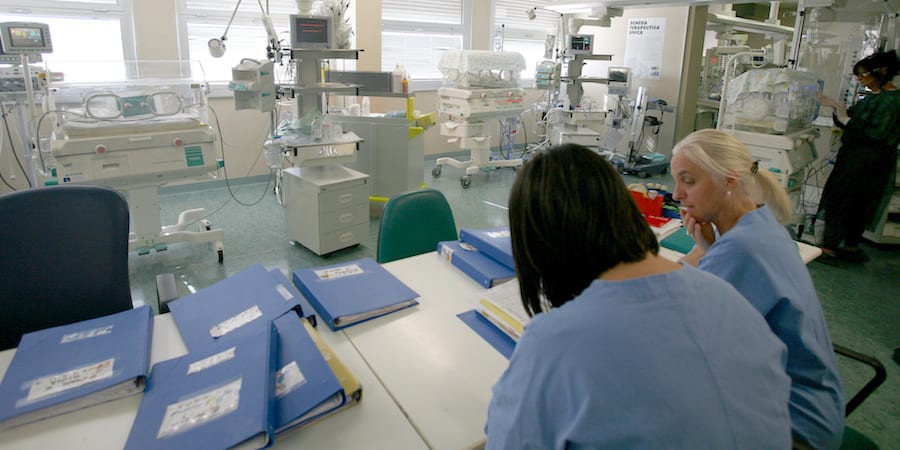
Interview with Helen Zak on lean healthcare challenges
INTERVIEW – At the recent European Lean Healthcare Transformation Summit, we sat down with Helen Zak for a few minutes to discuss the state of change in the healthcare sector.
Words: Helen Zak, Chief Development Officer, ThedaCare Center for Healthcare Value
Roberto Priolo: What does a successful lean transformation look like, in your opinion?
Helen Zak: Process matters, not just the outcomes. This means that an organization that has successfully completed a lean turnaround is one that has a clear focus on process.
Secondly, in a lean organization employees are the real engine of value creation and are actively engaged in problem solving and continuous improvement (each person providing hundreds of new ideas every year). Finally, you see executive teams getting involved and practicing what they preach (going to the gemba, role-modeling, and using A3s).
In essence, you see systems, behaviors and – yes – tools working together in harmony.
RP: What are some of the systemic challenges that healthcare faces today?
HZ: The payment system is certainly one. In its current form, it drives bad behavior, rewarding quantity over quality. Until that changes, we are going to continue to see the same bad outputs we see today. Tragically, this means us being unintentionally hurt and killed every day.
Healthcare has also gotten so complex that it is hard to manage. We need system architects in the industry to rationalize the way we work. Lean teams and heroic leaders are starting to put the right systems in place, but this does not happen across the sector yet. It still takes a special hospital to have a special leader who can see the future; sadly, most places are not like that.
We tend to see lack of leadership and lack of vision, instead of the will (or the grit) to do the hard work of changing.
RP: What makes it so hard to understand the role of a managing system?
HZ: Senior healthcare executives have become successful thanks to a certain set of behaviors, but those aren’t the behaviors that you need in a lean management system.
As we all know, habits are hard to break and not everybody is willing to do that. It takes a burning platform, first, and then a leader who understands the need to change himself or herself.
Additionally, people don’t know what good looks like; they just know what has made them successful. That’s why we take them to ThedaCare and Virginia Mason and so on, to show them what good looks like so they have that mental model that allows them to understand what lean is all about. These are just small steps, but they hopefully help us to plant a seed in their heads. When they see how fundamentally different a lean organization is, they start to get it – “There are no bells going off here,” “This ward is not chaotic,” or “Is that the manager at the huddle board?”
RP: What has ThedaCare Center for Healthcare Value been up to recently?
HZ: We are trying to share all the new knowledge that is coming out. The Healthcare Value Network (which we run) is a group of 60 organizations across North America that really act as incubators of new knowledge. Our job is to disseminate the lessons they learn with organizations around the world (for example through conferences, gemba visits, and publications, like the latest book by John Toussaint, Management on the Mend).
Our new frontier, however, is focusing more on CEOs, because we firmly believe that you can’t have a lean transformation only from the bottom up. We see this as a big gap in the industry, and we are working hard to fill it, mainly by trying to make CEOs understand that transformations start with them and by coaching them through what they need to do (from the definition of the organization’s True North to the strategy deployment process). We are trying to help them understand their role.
THE INTERVIEWEE

Read more


FEATURE – Looking at successful journeys, the authors explain why a true lean transformation requires a chain of mentoring in TPS to fulfil the promise of each person’s individual learning.


FEATURE – Leading by solving problems is a key trait of any lean leader, but it is important to understand that not all problems are their prerogative.


FEATURE – Too often we tend to focus on trying to replicate success, rather than analyze failure. Yet, learning from mistakes is a fundamental principle in lean. This account of a transformation gone south offers an insightful critique of lean.


FEATURE – Another month, another story of a lean project told by the Siena hospital front-line folks. This time we take you to the Intensive Care Nursery, whose layout was transformed to provide better care to premature newborns.

